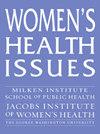Smoking Cessation Programs for Women in Non-reproductive Contexts: A Systematic Review
IF 2.5
2区 医学
Q2 PUBLIC, ENVIRONMENTAL & OCCUPATIONAL HEALTH
引用次数: 0
Abstract
Background
Women's smoking and cessation behaviors are influenced by various sex- and gender- (SaG) related factors; however, most smoking cessation programs that do not target pregnant women follow a gender-neutral approach. We aimed to systematically review the literature on smoking cessation programs for women outside reproductive contexts to assess their effectiveness and how they address SaG-related barriers.
Methods
We selected experimental studies published between June 1, 2009, and June 7, 2023, that describe smoking cessation interventions designed exclusively for women. Two independent reviewers extracted study characteristics, intervention effectiveness, strategies to address SaG-related factors, and the studies’ approach to gender equity using the gender integration continuum. We searched multiple databases to comprehensively identify relevant studies for inclusion. The protocol was registered with PROSPERO #CRD42023429054.
Results
Twenty-five studies were selected and summarized using a narrative synthesis. Of these, nine (36%) found a greater reduction in smoking in the intervention group relative to the comparison group. Nine studies addressed women's concerns about post-cessation weight gain; however, in only one of these did the intervention group show a greater likelihood of quitting smoking relative to the comparison group. In contrast, three of four studies tailored for women facing socioeconomic disadvantage, and three of four studies designed for women with medical comorbidities, reported a greater reduction in smoking behaviors in the intervention relative to the comparison group. Ten studies relied solely on counseling and did not provide participants with smoking cessation pharmacotherapy. Overall, studies addressed individual and community-level barriers to quitting, including post-cessation weight gain, lack of social support, psychological distress, and cultural influences. All but one study avoided using harmful gender norms to promote cessation.
Conclusions
Strategies that address SaG-related barriers to quitting may improve cessation outcomes among women, particularly when tailored to meet the unique needs of specific groups such as those facing socioeconomic disadvantage. Future studies should combine best practices in smoking cessation treatment—behavioral counseling and pharmacotherapy—with new knowledge on how SaG factors influence motives for smoking and barriers to quitting. Such an approach could lead to more effective and equitable smoking cessation interventions for women.
非生殖环境下妇女戒烟计划:系统综述。
背景:女性吸烟和戒烟行为受各种性别和性别(SaG)相关因素的影响;然而,大多数不以孕妇为目标的戒烟计划都采用了性别中立的方法。我们的目的是系统地回顾有关非生殖环境下女性戒烟计划的文献,以评估其有效性以及如何解决与生殖障碍相关的问题。方法:我们选择了2009年6月1日至2023年6月7日之间发表的实验研究,这些研究描述了专门为女性设计的戒烟干预措施。两名独立的评论者提取了研究特征、干预效果、解决性别平等相关因素的策略,以及使用性别整合连续体的研究方法。我们检索了多个数据库,以全面确定相关研究纳入。该协议注册号为PROSPERO #CRD42023429054。结果:选取了25项研究,并采用叙事综合的方法进行了总结。其中,9个(36%)发现干预组的吸烟量比对照组减少得更多。九项研究解决了女性对戒烟后体重增加的担忧;然而,只有在其中一个案例中,干预组比对照组表现出更大的戒烟可能性。相比之下,四项针对处于社会经济不利地位的妇女的研究中有三项,四项针对有医疗合并症的妇女的研究中有三项报告说,与对照组相比,干预组吸烟行为的减少幅度更大。10项研究仅依赖于咨询,没有为参与者提供戒烟药物治疗。总的来说,研究解决了个人和社区层面的戒烟障碍,包括戒烟后体重增加、缺乏社会支持、心理困扰和文化影响。除了一项研究外,所有研究都避免使用有害的性别规范来促进戒烟。结论:解决与sag相关的戒烟障碍的策略可能会改善妇女的戒烟结果,特别是当针对特定群体(如面临社会经济劣势的群体)的独特需求进行定制时。未来的研究应该将戒烟治疗的最佳实践——行为咨询和药物治疗——与SaG因素如何影响吸烟动机和戒烟障碍的新知识结合起来。这种方法可能导致对妇女采取更有效和公平的戒烟干预措施。
本文章由计算机程序翻译,如有差异,请以英文原文为准。
求助全文
约1分钟内获得全文
求助全文
来源期刊

Womens Health Issues
Multiple-
CiteScore
4.50
自引率
6.20%
发文量
97
审稿时长
32 days
期刊介绍:
Women"s Health Issues (WHI) is a peer-reviewed, bimonthly, multidisciplinary journal that publishes research and review manuscripts related to women"s health care and policy. As the official journal of the Jacobs Institute of Women"s Health, it is dedicated to improving the health and health care of all women throughout the lifespan and in diverse communities. The journal seeks to inform health services researchers, health care and public health professionals, social scientists, policymakers, and others concerned with women"s health.
 求助内容:
求助内容: 应助结果提醒方式:
应助结果提醒方式:


